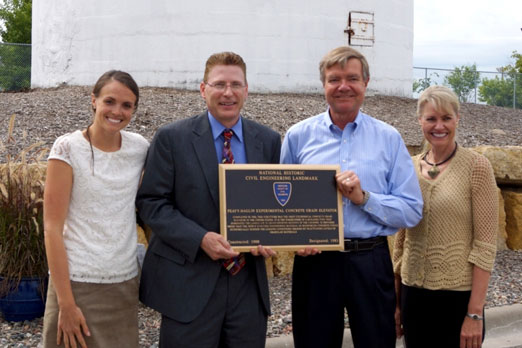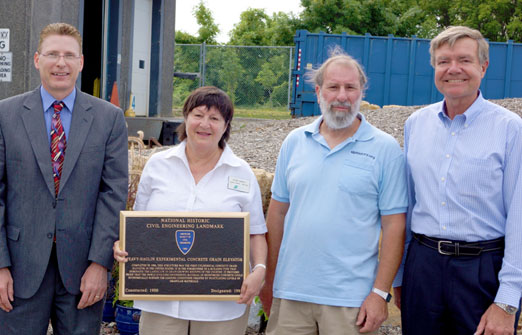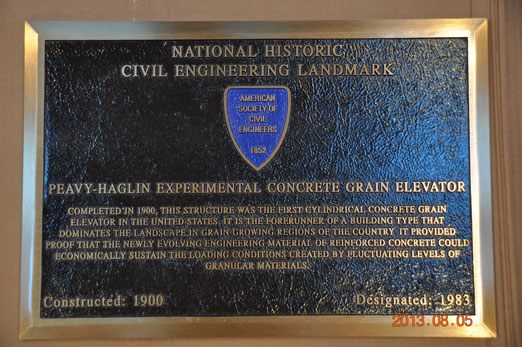Grain merchant Frank Hutchinson Peavey was born in Maine in 1850, and headed west at the age of 15. After a stop in Chicago, he went into the grain business in Sioux City in 1874, and immediately saw the need to find a better way to store grain. He came to Minneapolis in 1884 and quickly began buying elevators all over the area. One was the McKenzie-Hague-Simons elevator, built in about 1890, with a capacity of 1.5 million bushels. Partner Van Dusen Harrington owned the Cable Piano Company in Chicago, and dismantled the elevator planking and shipped it to the piano factory.
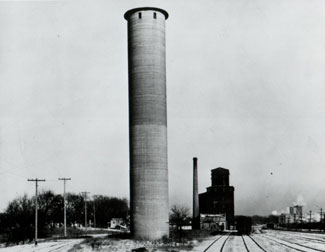
Fire was a constant danger to the wooden terminals, and Peavey was determined to lower the skyrocketing insurance rates that resulted from these disasters. He commissioned Minneapolis architect/builder/contractor Charles F. Haglin (1849-1921) to build the Peavey-Haglin Experimental Concrete Grain Elevator at the intersection of now-Highways 100 and 7. The structure was 122 ft. high, its walls are 12 inches thick, the inside diameter is about 20 ft.
Its basic shape and lack of ornamentation was influenced by Architect Walter Gropius, founder of the new International Style. (It has also been described as based on a Romanian design). Whatever its inspiration, it was the first circular grain elevator built of poured concrete in the US and possibly the world. The design became the industry standard, serving as the model for the Washburn Crosby grain storage complexes in Buffalo and Minneapolis.
In May 1899, the new elevator was filled and the next year it was emptied. Skeptics were sure that the structure would crack or explode, and dubbed it “Peavey’s folly.” Hundreds of spectators who came to watch the expected explosion were cordoned off to safety in the event the predictions proved true. “Jeers turned to cheers” when the elevator held, and history was made. The experiment was so remarkable that it was reported in the New York Times. Nevertheless, after the excitement was over, the structure was never again used for grain storage. It was, however, sometimes referred to as the “Test Grain Tank.”
Peavey died suddenly of pneumonia in 1901 at age 51. The company incorporated in 1906, was controlled by family members (including son-in-law Heffelfinger) for many years, and merged with Con-Agra in 1982.
LUMBER STORES, INC.
In the 1950s, the property belonged to Lumber Stores, Inc.
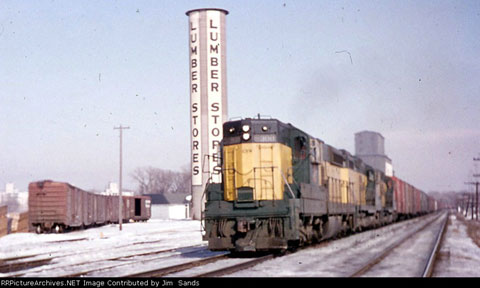
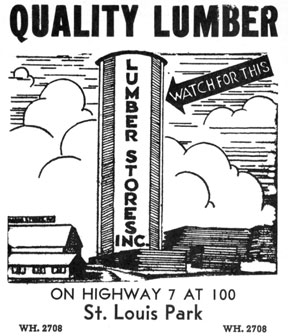
1954
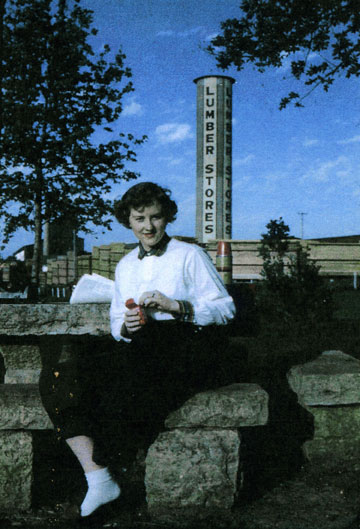
NORDIC WARE
The structure became the property of Northland Aluminum (Nordic Ware). In about 1969, renovations were made as the structure was in grave danger of toppling over. Timber pilings on the base of the elevator were replaced with steel reinforced concrete to prevent it from sinking. At that time, Nordic Ware painted its famous ad on the building. The renovation cost some $40,000.
It was placed on the list of Historic Places with the Department of Interior on December 19, 1978 with the number 78001549.
In 1983 the tower was designated a civil engineering landmark by the American Society of Civil Engineers – one of three in Minnesota.
In 2012 the elevator inspired the name and artwork of the new TowerLight senior living campus at 3601 Wooddale Ave. Artist Randy Walker created a replica of the structure from steel and lighted ropes to form the 44 ft. high “Dream Tower.” See the article in the StarTribune from October 30, 2012.
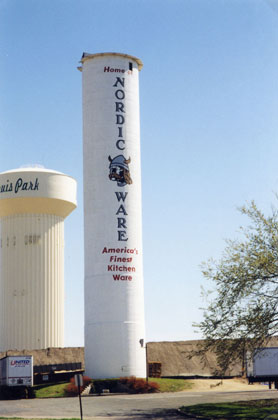
On August 6, 2013, the American Society of Civil Engineers, which had partnered with Nordic Ware to help preserve the elevator, rededicated it and provided a replacement plaque. The photos below are courtesy of the ASCE.
